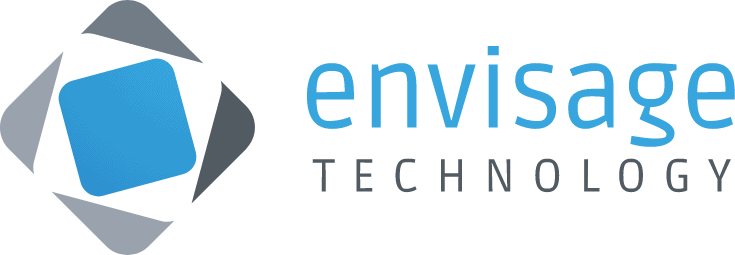Dictionary
A
AVD
Azure Virtual Desktop
Azure Virtual Desktop (AVD), formerly known as Windows Virtual Desktop, is a Microsoft Azure-based system which gives users access to a secure virtual desktop and application in the cloud (over the internet).
AAD
Azure Active Directory
Azure Active Directory (also known as Azure AD) is Microsoft’s enterprise cloud-based identity service which securely offers simple access to resources using a single identity and platform.
AV
Anti Virus
Anti Virus is a programme that sits on a device and protects it from known threats by comparing new programmes and behaviour to a library of known malicious files and behaviour.
API
Application Programming Interface
This is a set of definitions and protocols that allow different products to talk to each other.
B
BI
Business Intelligence
Business Intelligence (BI) uses software to discover valuable insights from analysed data sets and guides a businesses’ strategic decisions.
C
CSV
Comma Separated Values
Comma separated values (CSV) files are computer files containing tabular data, which is presented in plain text, allowing data to be transferred from one program to another.
CIO
Chief Information Officer
The CIO role is responsbile for the technology strategy of an organisation. Connecting business goals and problems to technology able to support them is a core part of the role.
CPU
Central Processing Unit
The CPU is the powerhouse of any computer or server. It manages all the computational requirements of running programmes under three main areas. An Arithmetic Logic Unit (ALU) carries out the calculations, processor registers that supply operations and store the results, and a control unit that orchestrates the whole show. The CPU specification is one of the main elements that dictates the performance of a piece of hardware.
CDO
Chief Data Officer
The CDO role is a relatively new member of the C-Suite. It has ultimate accountability for the organisations ability to derive value from the information held within its systems.
CISO
Chief Information Security Officer
The CISO role is an escalation of cyber security into it’s own dedicated function within the C-Suite. Individuals with this title hold ultimate accountability for an organisation’s information being protected and its systems being safe from attack.
CTO
Chief Technology Officer
The CTO is most often present in organisations developing their own technology to be sold externally, having ultimate accountability for the products developed for sale. In a non-tech organisation they may be present to seek out innovative and emerging technologies that could assist the organisation.
CDO
Chief Digital Officer
This version of the CDO initialism is accountable for the digital transformation of an organisation. They are often involved in the selection, implementation, and adoption of digital technologies.
D
DBA
Database Administrator
Database Administrator (DBA) is a technician who specialises in directing and performing all activities related to maintenance of an organisation’s database.
DNS
Domain Name System
Domain Name System (DNS) is a naming system which translates domain names (www.envisageit.com.au) into Internet Protocol (IP) addresses (202.74.70.155).
DDoS
Distributed Denial of Service
Distributed Denial of Service (DDoS) is a type of cyber attack where the offender intends to make a machine or network not accessible to its users by flooding their server with traffic.
DAX
Data Analysis eXpressions
Data Analysis eXpressions (DAX) is a collection of functions and operators used to build formulas and expressions. This is used in Power BI, Analysis Services and Excel data models.
H
HL7
Health Level Seven
Health Level Seven (HL7) is a set of international standards healthcare professionals must adhere to when transferring data (clinical and administrative) between different healthcare providers.
I
ITIL
Information Technology Infrastructure Library
Information Technology Infrastructure Library (ITIL) is a framework designed to standardise the selection, delivery, planning, and maintenance of the overall IT system within a business.
IAM
Identity and Access Management
Identity and Access Management (IAM) is a collection of processes, policies and tools for giving the right users access to critical information and resources within an organisation.
M
MSP
Managed Services Provider
Managed Services Provider (MSP) is an outsourcer contracted to remotely manage or deliver IT services such as infrastructure, security, networking and applications, as well as payroll, customer engagement and staffing.
MHR
My Health Record
My Health Record (MHR) is a secure digital platform which stores all of your health information, including your medical history and emergency contacts.
N
NAS
Network Attached Storage
Network Attached Storage (NAS) is a storage system that allows multiple or different users to access the same files in one central location.
P
PICNIC
Problem In Chair, Not In Computer
Problem in Chair, Not in Computer (PICNIC) is the term IT professionals use to suggest the issue is not related to the technological device itself, but rather a user’s lack of computer knowledge.
PHI
Private Health Information
Private Health Information (PHI) is the summation of all your private health details, including medical history and results.
PCI
Payment Card Information
Payment Card Industry (PCI) is the collation of data required for a user to make a payment. This includes all payment methods, for example, credit/debit cards, direct debit, bank transfer and digital wallet.
R
RDS
Remote Desktop Services
Remote Desktop Services (RDS) is a component of Microsoft Windows which allows users to control a computer remotely.
RPO
Recovery Point Objective
Recovery Point Objective (RPO) is the maximum amount of data loss that can occur before a cyber incident causes harm to an organisation.
RMM
Remote Monitoring and Management
Remote Monitoring and Management (RMM) is the monitoring and access of IT systems from a remote location.
RTO
Recovery Time Objective
Recovery Time Objective (RTO) is the realistic time a business sets to achieve data recovery after a cyber disaster.
RAM
Random Access Memory
RAM is your system’s short term memory. It stores data in a manner that is quickly accessible whilst it is in active use. Having more RAM in your device will mean that more data can be actively used. This could be beneficial if you utilise multiple applications at once, or if the applications you use need to access a lot of data. Video Editing Applications, Web Browsers, and Computer Games are all known to need large amounts of RAM available to operate effectively.
S
SLA
Service Level Agreement
Service Level Agreement (SLA) is an agreed-upon commitment between the consumer and IT provider that covers all aspects of their role and responsibilities.
SIEM
Security Information and Event Management
Security Information and Event Management (SIEM) proactively detects, analyses and responds to security threats before they cause harm to an organisation’s operations.
SSO
Single Sign On
Single Sign-On (SSO) is a sign-on method that allows users to securely sign on with one set of credentials.
SOC
Security Operations Centre
Security Operation Centre (SOC) continuously monitors and improves an organisation’s security by detecting, analysing, and responding to cybersecurity incidents.
SQL
Structured Query Language
Structured Query Language (SQL) is a standardised programming language used to simplify data management.
SaaS
Software-as-a-Service
SaaS applications are delivered direct to the end user through either a downloaded app or straight in the web browser. An organisation will pay a license fee, often per user per month, and will not need its own infrastructure (beyond a laptop/desktop/tablet/mobile) to use the software.
V
VPN
Virtual Private Network
Virtual Private Network (VPN) is an encrypted connection which provides online privacy by imitating a private network from a public internet connection.
VOIP
Voice Over Internet Protocol
Voice Over Internet Protocol (VOIP) is technology that allows people to communicate over the internet using audio instead of the standard phone lines.
VM
Virtual Machine
Rather than require a full piece of hardware for each environment needed. The VM software allows each physical server (called a Host) to have its resources (CPU and RAM) shared between multiple virtualised servers running programmes. This tool has significantly reduced the costs of running multiple environments and was key in making cloud computing a reality.
W
WAP
Wireless Access Point
Wireless Access Point (WAP) is a hardware device which allows Wi-Fi devices to connect to a wired network.
We make switching Easy!
Changing IT companies or systems can be a hassle. We’ll support you through the process, liaising with your existing IT partner and helping you source everything we need to hit the ground running.

